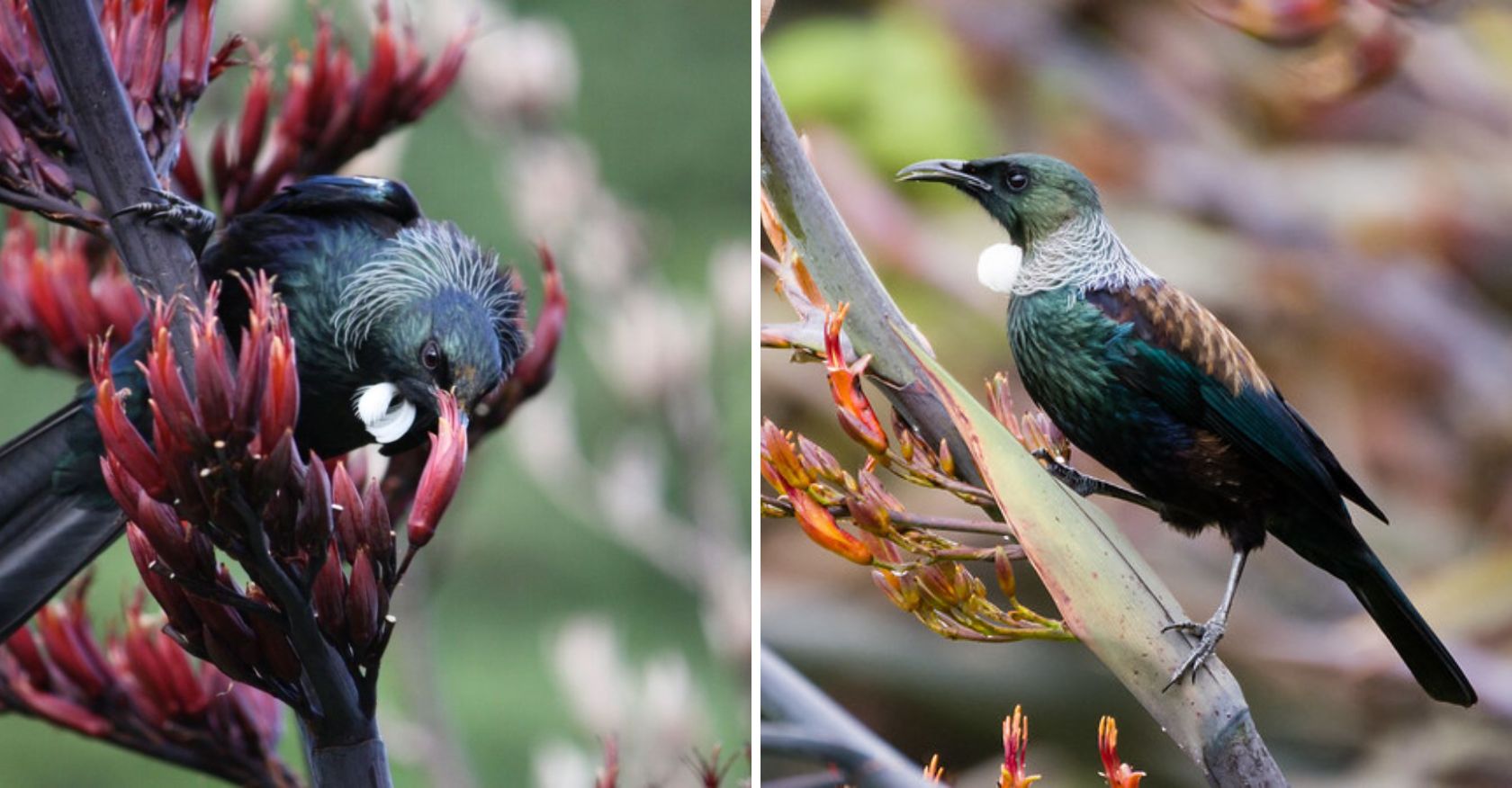Meet the Tui: Adorned in a Shimmering Iridescent Suit with a Song to Match

At first glance, this bird looks completely black except for the white feathers on his neck. But looks can initially be deceiving.
It’s not until you look closer that you see the multicolored iridescent sheen on the feathers that varies with the angle from which the light strikes them, and the sprinkle of white flecks on his neck that produces his lacy collar.
Meet the New Zealand Tui
 Photo Courtesy of Bernard Spragg. NZ / Public domain
Photo Courtesy of Bernard Spragg. NZ / Public domain
Tui is easily recognizable by the white tuft of feathers on his throat, kind of resembling a fluffy bowtie. There is also a white patch on the wings, and flecks of white around the back of the neck. The rest of the body is covered in iridescent feathers that change in appearance depending on the light.

Females of this species resemble the male, however, they tend to be smaller in size than their male counterparts. Juveniles tend to be a brown color and lack the white tuft of feathers on their throats.
 Photo Courtesy of Skenneally / CC BY-SA 2.0
Photo Courtesy of Skenneally / CC BY-SA 2.0
Tui is widespread through New Zealand’s three major islands, North Island South Island, and Stewart Island.
They are also present on the Kermadec and Auckland Islands as well as a larger subspecies on the Chatham Islands.

Tui likes to be in broadleaf temperate forested areas below 1500 meters, but will also frequent patches of forest, regenerating forests, and well-vegetated city and town gardens.
 Photo Courtesy of Lynda / CC BY-SA 2.0
Photo Courtesy of Lynda / CC BY-SA 2.0
Tui is a nectar feeder, their beaks being the perfect shape for many New Zealand flowering plants. However, they will also eat fruit and pollen. Their favorite nectar is from the New Zealand flax, which will sometimes ferment, resulting in some Tui flying in a drunk-like fashion.

Nests are built high up in the canopy by the female, from twigs and sticks, then lined by grass. Around 2 – 4 eggs are laid, which are pale pink, marked with reddish-brown spots and blotches. Hatchlings are initially fed by the female, with the male helping out later.
 Photo Courtesy of Francesco Veronesi / CC BY-SA 2.0
Photo Courtesy of Francesco Veronesi / CC BY-SA 2.0
Being a rather boisterous outgoing bird it’s not surprising that Tui is also quite aggressive. They will defend a flowering or fruiting tree or part of a tree, from all-comers. Whether it be from another species of bird or another Tui.

The Tui’s song is quite complex bell-like chimes, creaks, crackles, and groans. Much like parrots, in that, they have the ability to clearly imitate human speech.
 Photo Courtesy of Auckland Photo News / CC BY-SA 2.0
Photo Courtesy of Auckland Photo News / CC BY-SA 2.0
The population of this species fell heavily after European settlement, nonetheless, the current population is considered secure and has made recoveries in some areas after reforestation and the elimination of livestock.







